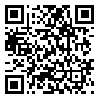BibTeX | RIS | EndNote | Medlars | ProCite | Reference Manager | RefWorks
Send citation to:
URL: http://jpr.mazums.ac.ir/article-1-723-fa.html
Background: Iron deficiency (ID) anemia is a global health concern, impairing growth, cognitive development, and immunity in children and adolescents. While iron supplementation is standard, adherence to its use is limited due to side effects such as gastrointestinal discomfort and unpalatable taste. The date fruit (Phoenix dactylifera L.) is a nutrient-rich food, containing iron, vitamin C, antioxidants, and other compounds, offering a culturally acceptable alternative.
Objectives: This study aims to review current studies on the advantages and disadvantages of date intake.
Methods: This is a narrative review. The search for related studies was conducted in PubMed, Scopus, Web of Science, and Google Scholar using keywords “date fruit,” “anemia,” “children,” “iron,” and “Phoenix dactylifera.” The controlled studies (e.g. RCTs, cohort studies) in children and adolescents were included. Quality assessment was performed using the Newcastle-Ottawa scale (NOS).
Results: From the 120 articles identified by the initial search, 9 eligible studies were ultimately selected. These studies (with a total number of 227 participants, aged 8-18 years) demonstrated that daily date consumption (50-100 g/day for 1-8 weeks) significantly increased hemoglobin levels, with a mean change of 1.16 g/dL (range: 0.24-2.29 g/dL; P<0.05 in most studies). Dates offered a natural and tolerable intervention for anemia management, particularly in regions where dates are more culturally accepted. Cultural and geographical factors, such as date accessibility in Middle Eastern vs non-endemic regions, warrant further exploration.
Conclusions: Date consumption is a promising nutritional strategy for anemia prevention in pediatric populations. However, further large-scale, longer follow-up RCTs are needed for confirmation. Policymakers are recommended to integrate date fruit consumption into health programs for children with anemia.
دریافت: 1403/11/20 | پذیرش: 1404/7/26 | انتشار: 1404/7/26
| بازنشر اطلاعات | |
 |
این مقاله تحت شرایط Creative Commons Attribution-NonCommercial 4.0 International License قابل بازنشر است. |





